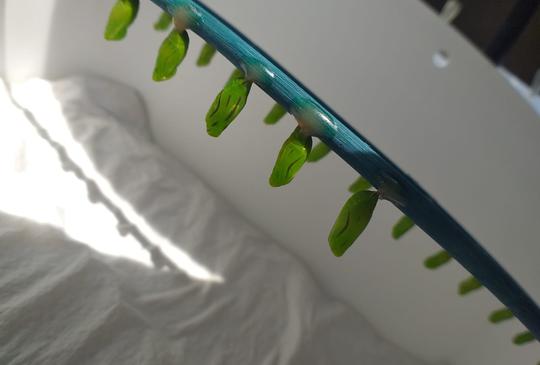
The return of the Manchester argus butterfly
If you go down to the moss today, you’re in for a big surprise.
This month saw the grand return of the Manchester argus butterfly to peatland across Greater Manchester, where it was last seen over 100 years ago.

Also known as the large heath butterfly, this interesting insect was once a common feature of Manchester’s mosses. However, due to the destruction of its peatland habitat and the rise of intensive farming, it became extinct in its native area. Region-wide, we have lost 98 per cent of our lowland raised bogs, creating a huge hole in our biodiversity, which has meant trouble for many species in the area over recent years.
A wildlife partnership
The Lancashire Wildlife Trust and Chester Zoo have been working tirelessly to incubate and feed around 50 Manchester argus caterpillars, collected from several large heath butterflies found in Winmarleigh Moss near Garstang last year. Heather Prince, part of a team of four specialist invertebrate keepers at Chester Zoo, said:
“Breeding and rearing butterflies in an incredibly delicate process that requires a fine balance of conditions at each part of their lifecycle. Countless hours have been spent inside our specialised breeding centre nurturing the tiny eggs, rearing the larvae and caring for their host plants as well as monitoring their final pupation period.”
“It will be incredibly rewarding to see large heath butterflies fluttering around in their new home - a place where they’ve been missing for more than 100 years – and know that we’ve contributed to preventing their extinction in this area.”
Restoring habitat
Now settling into their new homes amongst the mosses of Wigan and Salford, which have been carefully restored by the Lancashire Wildlife Trust, the butterflies still have a long way to go. The Manchester argus is unlikely to recolonise the area on its own, as even the most intrepid specimens rarely fly more than 650m, therefore further work will be needed from the Trust and local partners to maintain the large heath butterfly’s favourite habitat.
The Manchester argus is perfectly adapted to living in the acidic peat bogs and mosslands that once stretched for miles to the west of Manchester. With several peat restoration projects bringing life to Manchester’s mosses and peatlands, this exciting reintroduction brings hope that this butterfly will flourish once again in its homeland.
For more information see:
Greater Manchester’s Pilot Scheme to Restore Vital Peatland
Contributed by Tina Bugliosi
Contributor Profile
Jennifer Lane is Campaign Manager for the IGNITION Project and Natural Course.


